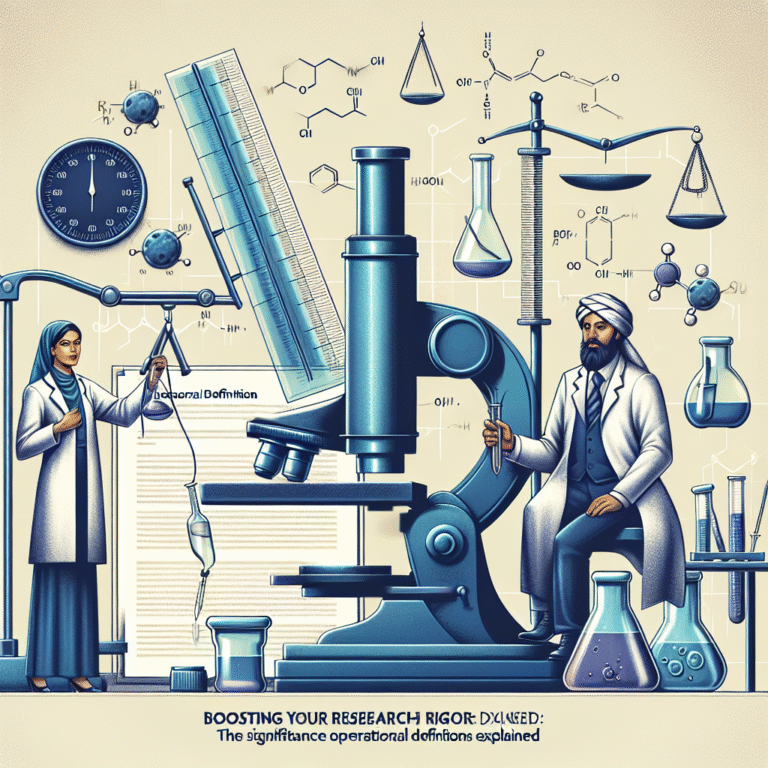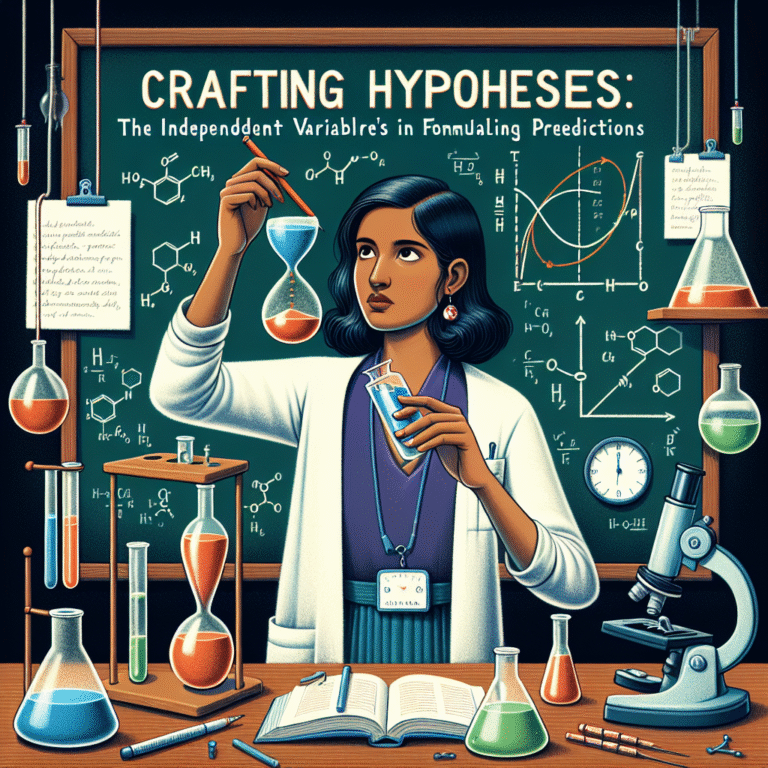
Introduction
In an era dominated by data, the ability to interpret and analyze quantitative information has never been more pivotal. Mastering Statistical Analysis: Tools and Techniques for Quantitative Research empowers researchers, businesses, and data enthusiasts to turn raw numbers into actionable insights. Whether you’re paving the way in academia or driving decisions in a corporate setting, understanding statistical analysis can unlock new avenues for discovery and improvement.
Imagine having the capability to dissect complex datasets, revealing patterns and trends that guide strategic choices. This article will serve as a comprehensive guide for mastering statistical analysis, providing you with the essential tools, techniques, and methodologies you need to hone your quantitative research skills.
The Foundation of Statistical Analysis
Before diving into specific tools and techniques, it’s essential to establish a solid foundation. Statistical analysis consists of various processes that allow researchers to collect, review, analyze, and draw conclusions from data. It plays a crucial role in differentiating credible research from mere speculation.
Key Concepts in Statistical Analysis
Understanding the cornerstone concepts is vital for mastering statistical analysis, including:
- Descriptive Statistics: These summarize data through metrics like mean, median, and mode. Descriptive statistics provide an overview of the data set, drawing attention to key features.
- Inferential Statistics: This branch makes predictions about a population based on a sample dataset. Inferential statistics use methods such as hypothesis testing and regression analysis to infer conclusions.
- Probability Theory: This underpins many statistical techniques by quantifying uncertainty and variability in data.
Table 1: Key Statistical Concepts
| Concept | Description |
|---|---|
| Descriptive Statistics | Summarizes and describes the features of a dataset |
| Inferential Statistics | Makes predictions about a population from a sample |
| Probability Theory | Quantifies uncertainty and variability |
These concepts form the bedrock of Mastering Statistical Analysis: Tools and Techniques for Quantitative Research.
Tools for Mastering Statistical Analysis
Once you understand the foundational concepts, the next step is to explore the essential tools that facilitate statistical analysis.
1. Statistical Software Packages
Statistical software packages are the backbone of quantitative research. They simplify complicated calculations and enable visualizing data effectively. Here are some leading tools:
- SPSS: Known for its user-friendly interface, SPSS allows researchers to perform extensive statistical analyses without deep programming knowledge.
- R: This open-source programming language excels in data manipulation and visualization, providing a powerful platform for statistical computing.
- Python with Pandas and Statsmodels: Python has become increasingly popular due to its versatility and a wide array of libraries for statistical analysis.
Case Study: SPSS in Social Research
A team of sociologists used SPSS to analyze survey data on social behaviors during the pandemic. By applying descriptive and inferential statistics, they could identify significant trends and variances in responses based on demographics. The insights derived from SPSS were instrumental in shaping policy recommendations.
2. Excel
Though often overlooked, Excel is a practical tool for performing basic statistical analyses. Its built-in functions, such as AVERAGE, STDEV, and T.TEST, can serve researchers effectively in quick data assessments before delving into more complex analyses.
Case Study: Excel in Market Analysis
A startup utilized Excel to analyze customer feedback data, employing basic statistical techniques to gauge satisfaction levels. The findings revealed critical areas needing improvement, leading to a 20% increase in customer retention.
3. Data Visualization Tools
Visualization tools are pivotal for interpreting complex datasets. They help translate intricate numbers into understandable graphs and charts.
- Tableau: Renowned for its ability to create interactive visualizations, Tableau allows users to explore data from multiple angles.
- Power BI: Microsoft’s Power BI aggregates data from various sources, turning it into visually compelling reports.
Chart 1: Data Visualization Example

Using data visualization is an integral component of Mastering Statistical Analysis: Tools and Techniques for Quantitative Research as it aids in presenting findings effectively.
Techniques for Statistical Analysis
While tools facilitate analysis, techniques direct your analytical approach. Below are some essential techniques vital for mastering statistical analysis.
1. Regression Analysis
Regression analysis helps establish the relationship between variables. This technique can identify trends, make predictions, and infer causal relationships.
- Linear Regression: A basic method for predicting the value of a dependent variable based on one or more independent variables.
- Logistic Regression: Useful for binary outcome predictions, such as yes/no decisions.
Case Study: Retail Sales Analysis
A retail chain applied linear regression to forecast quarterly sales based on promotional budgets and previous sales figures. The accuracy of their predictions improved significantly, guiding their marketing strategies effectively.
2. Hypothesis Testing
Hypothesis testing assesses whether data supports a specific theory or claim. It involves:
- Formulating a null hypothesis (H0) and an alternative hypothesis (H1).
- Using statistical tests (e.g., t-test, chi-square test) to determine the p-value and draw conclusions.
Case Study: Educational Research
In an educational setting, researchers tested whether a new teaching method improved student performance. Using a t-test, they found a statistically significant difference in test scores, validating the effectiveness of the new approach.
3. ANOVA (Analysis of Variance)
ANOVA tests for differences among three or more groups. It’s a robust technique for researchers looking to compare multiple data sets simultaneously.
Case Study: Agricultural Experiment
In agricultural research, ANOVA was employed to evaluate the yield of different crop varieties under various conditions. The analysis helped identify the superior crop variety for specific environmental factors.
Best Practices in Statistical Analysis
To become proficient in mastering statistical analysis, adhering to best practices is crucial. Here are some valuable guidelines:
1. Ensuring Data Quality
High-quality data is the cornerstone of reliable analysis. This includes data collection, preprocessing, and validation to ensure precision and accuracy.
2. Understanding the Data
Before analysis, ensure you have a deep understanding of your dataset. Data exploration techniques, including summary statistics and visualizations, can reveal important characteristics and anomalies.
3. Selecting Appropriate Techniques
Choosing the right statistical methods is vital. Different questions require different analyses; understanding your research objectives will guide your choice.
4. Communicating Results Effectively
Once analyses are completed, communicating findings clearly and concisely is essential. Utilize visualizations and summarize key points to ensure your audience understands your insights.
Conclusion
Mastering Statistical Analysis: Tools and Techniques for Quantitative Research is an ongoing journey that requires commitment and practice. By leveraging the right tools and techniques, you can transform raw data into powerful insights that support better decision-making. Whether through enhancing academic research or improving business outcomes, the skills you develop in statistical analysis can provide unparalleled advantages.
In today’s data-driven world, honing these skills will not only differentiate you but also empower you to tackle complex questions and contribute meaningfully to your field. As you continue your journey, remember that every dataset presents an opportunity to learn and grow.
FAQs
1. What is statistical analysis used for?
Statistical analysis is used to collect, review, analyze, and draw conclusions from data. It can be applied in various fields, including business, healthcare, social sciences, and education.
2. What tools are best for statistical analysis?
Some of the best tools include SPSS, R, Python (with Pandas), and Excel. Visualization tools like Tableau and Power BI also play a crucial role.
3. How do I perform regression analysis?
To conduct regression analysis, you need to define your dependent and independent variables, collect data, and use statistical software to run the analysis.
4. What is hypothesis testing?
Hypothesis testing is a statistical method that determines whether there is enough evidence to reject a null hypothesis in favor of an alternative hypothesis.
5. Why is data quality important?
Data quality is critical because inaccurate or biased data can lead to misleading conclusions and flawed decisions. Ensuring high-quality data is foundational to effective statistical analysis.
By continuously refining your understanding of Mastering Statistical Analysis: Tools and Techniques for Quantitative Research, you’ll be well-equipped to navigate the complexities of data and unlock its full potential. Happy analyzing!


















